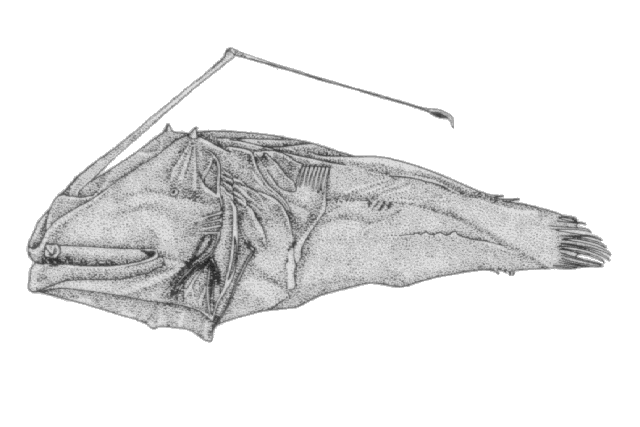| Oneirodidae (Dreamers) |
| 9.2 cm TL (female) |
|
bathypelagic; marine; depth range 1050 - 2000 m, non-migratory |
| Atlantic Ocean: north of Azores. Northwest Atlantic: Canada (Ref. 5951). Also known from the Southeast Pacific. |
|
Dorsal soft rays (total): 6-7; Anal soft rays: 5-6. Characterized by having two posteriorly directed papillae placed bilaterally on dorsal surface of escal bulb, each darkly pigmented on dorsal surface and on distal tip; compressed posterior appendage crescent shaped, unpigmented and short, equal to or less than length of escal bulb; unpigmented swollen basal part of posterior appendage; presence of connecting membrane between anterior and posterior filaments of posterior escal appendage; darkly pigmented posterior edge of anterior filament of posterior escal appendage; lower jaw teeth 42-128; absence of vomerine teeth in specimens 18.5 mm and larger, 2 teeth or less in smaller specimens; dorsal fin rays 6-7; anal fin rays 5-6; pectoral fin rays 19-21; head length 33.1-42.5% SL; head width 17.6-26.0% SL; head depth 26.3-37.5%SL; premaxilla length 20.4-29.5% SL; length of lower jaw 30.1-41.9% SL; length of illicium 26.9-48.9% SL (Ref. 86949). |
|
|
Least Concern (LC); Date assessed: 09 May 2013 Ref. (130435)
|
| harmless |
Source and more info: www.fishbase.org. For personal, classroom, and other internal use only. Not for publication.

